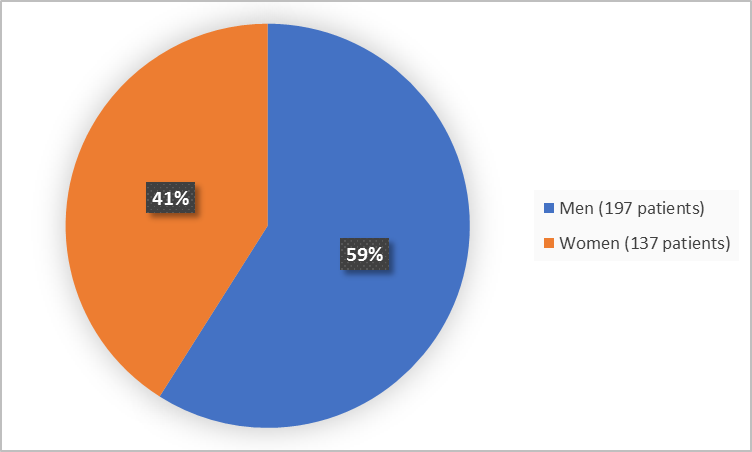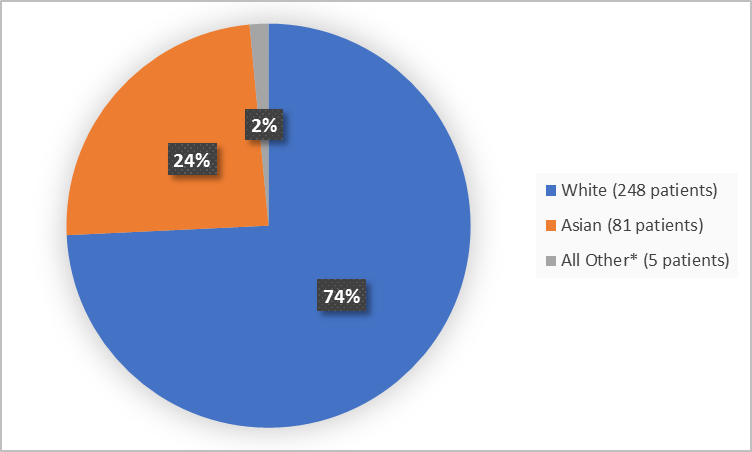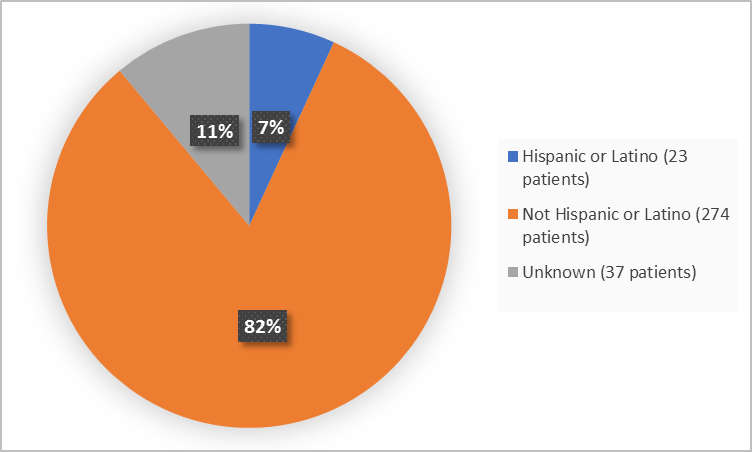A new DRUG TRIALS SNAPSHOT is now available.

Drug Trials Snapshots: TABRECTA
TABRECTA is a drug used to treat adult patients with a type of non-small cell lung cancer (NSCLC) which:
- has a specific gene mutation (mesenchymal epithelial transition or MET mutation) and,
- has spread to other parts of the body (metastatic).
TABRECTA is a capsule taken by mouth twice a day.
See more Drug Trials Snapshots or contact us with questions at Snapshots@fda.hhs.gov.
TABRECTA (capmatinib)
ta brek tah
Novartis
Approval date: May 6, 2020
ta brek tah
Novartis
Approval date: May 6, 2020
DRUG TRIALS SNAPSHOT SUMMARY:
What is the drug for?
TABRECTA is a drug used to treat adult patients with a type of non-small cell lung cancer (NSCLC) which:
- has a specific gene mutation (mesenchymal epithelial transition or MET mutation) and,
- has spread to other parts of the body (metastatic).
How is this drug used?
TABRECTA is a capsule taken by mouth twice a day.
What are the benefits of this drug?
Nineteen (68%) of 28 patients with NSCLC who have not been previously treated and who received TABRECTA experienced complete or partial shrinkage of their tumors. Tumor shrinkage lasted more than 12 months for 47% of those patients.
Twenty-eight (41%) of 69 patients with NSCLC who have been previously treated and who received TABRECTA experienced partial shrinkage of their tumors. Tumor shrinkage lasted more than 12 months for 32% of those patients.
TABRECTA was approved under FDA’s accelerated approval program, which provides earlier patient access to a promising new drug while the company continues to conduct clinical trials to confirm that the drug works well.
Were there any differences in how well the drug worked in clinical trials among sex, race and age?
- Sex: TABRECTA worked similarly in men and women.
- Race: The majority patients in the clinical trial were White or Asian. Differences among races could not be determined.
- Age: TABRECTA worked similarly in patients below and above 65 years of age.
What are the possible side effects?
TABRECTA may cause serious side effects including lung inflammation, liver toxicity, increased sensitivity to sunlight, and harm to an unborn baby.
The most common side effects of TABRECTA are swelling of hands and feet, nausea, tiredness, vomiting, shortness of breath and decreased appetite.
Were there any differences in side effects among sex, race and age?
- Sex: The occurrence of side effects was similar in men and women.
- Race: The majority patients in the clinical trial were White or Asian. Differences in side effects among races could not be determined.
- Age: The occurrence of side effects was similar between patients below and above 65 years of age.
WHO WAS IN THE CLINICAL TRIALS?
Who participated in the trials?
The FDA approved TABRECTA based on the evidence from one clinical trial (NCT02414139) of 334 patients with metastatic NSCLC which had MET mutation. The trial was conducted at 92 sites in the United States, Austria, Belgium, France, Germany, Israel, Italy, Japan, Korea, Lebanon, Mexico, Netherlands, Norway, Russia, Singapore, Sweden, Switzerland, Spain, Taiwan and the UK.
All 334 patients that provided data for the assessment of side effects of TABRECTA (safety population) are presented below. Some of these patients (97) provided data for the assessment of the benefits of TABRECTA (efficacy population) and they are presented in Table 5 under MORE INFO 5.
Figure 1 below summarizes by sex how many patients were in the clinical trial.
Figure 1. Demographics by Sex (safety population)
Adapted from FDA Review
Figure 2 summarizes the percentage of patients in the clinical trial by race.
Figure 2. Demographics by Race (safety population)
*includes American Indian or Alaska Native, Black or African American and Unknown
Adapted from FDA Review
Figure 3 below summarizes the percentage of patients in the clinical trial by age.
Figure 3. Demographics by Age (safety population)
Adapted from FDA Review
Figure 4. Demographics by Ethnicity (safety population)
Adapted from FDA Review
How were the trials designed?
The benefit and side effects of TABRECTA for metastatic NSCLC with MET mutation were evaluated in one clinical trial. Some patients were previously treated for their cancer and some were not (treatment-naïve).
Patients received 400 mg TABRECTA orally twice a day until either cancer progression or intolerable side effects.
The benefit of TABRECTA was evaluated by measuring the percentage of patients who achieved complete or partial shrinkage of their tumors (overall response rate) and by measuring the duration of that benefit (duration of response).
GLOSSARY
CLINICAL TRIAL: Voluntary research studies conducted in people and designed to answer specific questions about the safety or effectiveness of drugs, vaccines, other therapies, or new ways of using existing treatments.
COMPARATOR: A previously available treatment or placebo used in clinical trials that is compared to the actual drug being tested.
EFFICACY: How well the drug achieves the desired response when it is taken as described in a controlled clinical setting, such as during a clinical trial.
PLACEBO: An inactive substance or “sugar pill” that looks the same as, and is given the same way as, an active drug or treatment being tested. The effects of the active drug or treatment are compared to the effects of the placebo.
SUBGROUP: A subset of the population studied in a clinical trial. Demographic subsets include sex, race, and age groups.
COMPARATOR: A previously available treatment or placebo used in clinical trials that is compared to the actual drug being tested.
EFFICACY: How well the drug achieves the desired response when it is taken as described in a controlled clinical setting, such as during a clinical trial.
PLACEBO: An inactive substance or “sugar pill” that looks the same as, and is given the same way as, an active drug or treatment being tested. The effects of the active drug or treatment are compared to the effects of the placebo.
SUBGROUP: A subset of the population studied in a clinical trial. Demographic subsets include sex, race, and age groups.


























.png)











No hay comentarios:
Publicar un comentario